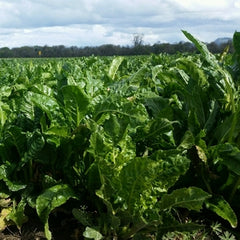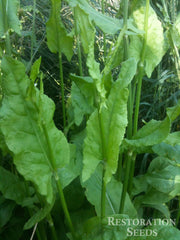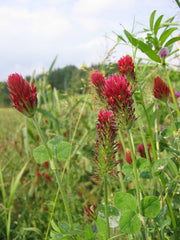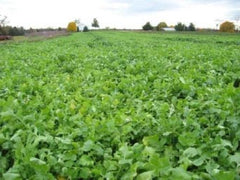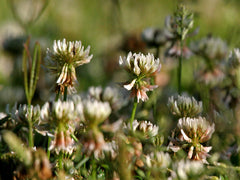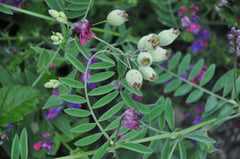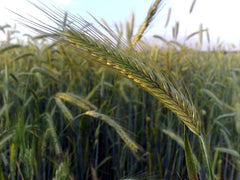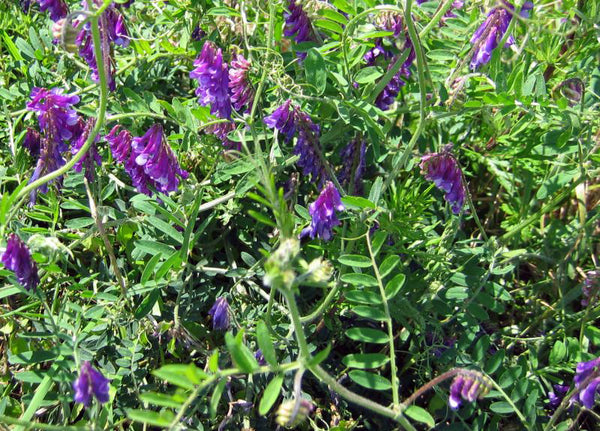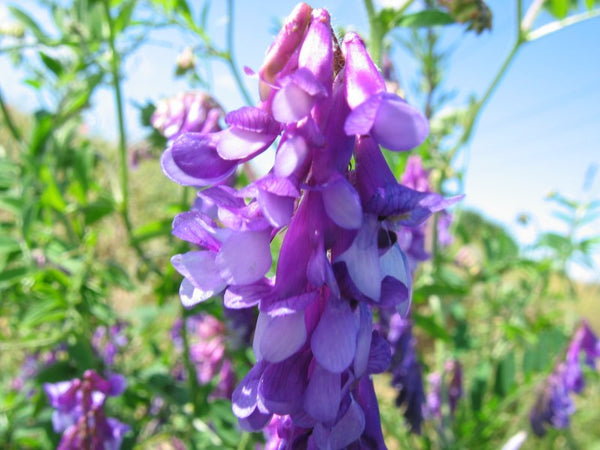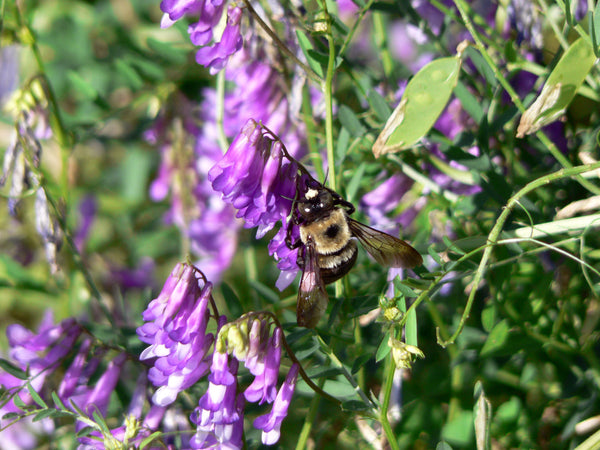Hairy Vetch
Vicia villosaSOWING
Best to sow in fall, July/August to mid-October, inoculate. When sown late summer, spring regrowth is vigorous and nitrogen producing for tilling in before planting the spring garden crops. Spring sow, March 15 to May 1.
ADAPTATION
It is adapted to light sandy soils as well as some heavier soils, but likes well drained areas for best production, does well on hill lands. Will do poorly in clay or wet fields. It will do well in soils too acidic for many clovers and alfalfas. Hardy down to 10°F if planted early so that it is well established before winter. Shade tolerant. As adapted in the wild to northern California and southern Oregon Mediterranean climate.
MANAGEMENT
For best results, till under when in the flowering stage. Sow with grain, grass, oats or field peas for over wintering cover if your goal is to build organic matter due to its low carbon to nitrogen ratio. May have some allelopathic properties, allow 2-3 weeks between incorporating and seeding of small-seeded crops.
FOR SEED
Harvesting for seed is difficult because the pods do not mature uniformly. Vetch seed can be harvested with a combine when the lower pods are fully ripe. This will provide the maximum ripe seed yield. Harvesting losses due to shattering may be large. Shattered seed can be disked in as soon as possible after harvest to start a new crop. The seed crop must be cleaned at once to remove green pods, immature seeds, insects and other debris. If seed is not cleaned, a white mold will grow on the black vetch seed, lowering the quality. Rye and vetch seed can be separated with a spiral seed separator.
SHIPPING COST
25-lb., 50-lb. and larger sizes ship via ground transportation. Select the appropriate Bulk Shipping option at checkout. We may email you additional shipping costs separately based on your total order weight, zone and palleting costs.
LEARN MORE
SARE and Managing Cover Crops Profitably, 3rd Edition.
Days from maturity calculated from the date of seeding. Average 11,400 seeds per pound. Sow average of 30–40 lbs per acre, 1 lb per 1000 square feet. Organic systems should plant 1/3 to 1/2 heavier to allow for some weed pressures. Usual seed life: 5–6 years.
Planting Depth 1/4–1/2"
Soil Temp. Germ. 50–60˚F
Days to Germ. 10–14
Plant Spacing 6–9.5”
Row Spacing 6–10”
Days To Maturity 60–300
Full Sun, Moist Well Drained Soil
Hairy Vetch Seed Count
1 Pound ≈ 23,261 seeds
5 Pounds ≈ 116m seeds
25 Pounds ≈ 582m seeds
- 1 Pound$10.00
- 5 Pounds$28.00
Organic gardeners often plant hairy vetch as a companion plant to tomatoes, as an alternative to rotating crops in small growing areas. When it is time to plant tomatoes in the spring, the hairy vetch is cut to the ground and the tomato seedlings are planted in holes dug through the matted residue and stubble. The vetch vegetation provides both nitrogen and an instant mulch that preserves moisture and keeps weeds from sprouting.
Disadvantages of hairy vetch has a portion of hard seed and its tendency to shatter seed early in the season, leading to it remaining in the field as a weed later in the season. This can be a particular problem in wheat production. Many seed processors can remove the vetch from the wheat, creating a valuable cover crop seed.
Tags: Color: Purple, Specialty: Cover Crop, Specialty: Drought Tolerant, Season: Spring Fall Winter.Harry Vetch is a plant native to Europe and western Asia. It is not native to the U.S; it was introduced from elsewhere and naturalized in the wild.
